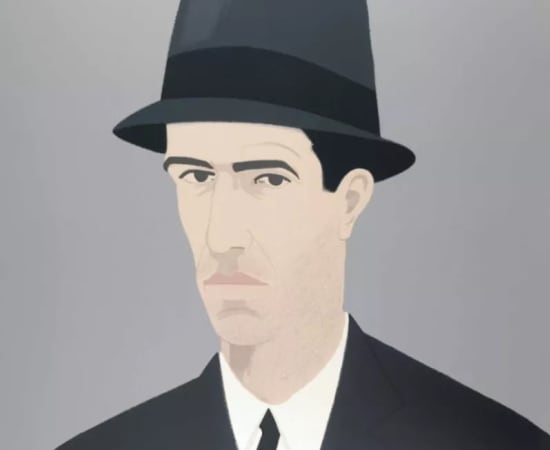Alex Katz (born July 24, 1927) is an American figurative painter known for his bold colors, simplified forms, and flattened compositions. Born in Brooklyn, New York, Katz studied at The Cooper Union and later at the Skowhegan School of Painting and Sculpture in Maine. He emerged as a prominent figure in the New York art scene in the 1950s, alongside artists like Jasper Johns and Andy Warhol, and became known for his innovative approach to portraiture and landscape painting.
Katz's early works were influenced by abstract expressionism, but he soon developed his own unique style, which he called "direct painting." This technique involved applying paint quickly and spontaneously onto the canvas, creating bold, flat shapes and sharp outlines. Katz's use of simplified forms and vibrant colors gave his paintings a sense of immediacy and freshness, capturing the essence of his subjects with striking clarity.
One of Katz's most iconic subjects is the figure of his wife and muse, Ada. Katz has painted Ada hundreds of times over the years, capturing her image in various poses and settings. These portraits are celebrated for their intimacy and emotional depth, revealing not just the physical likeness of Ada, but also the artist's deep connection to his subject.
In addition to his portraits, Katz is also known for his landscape paintings, which often depict scenes of the American landscape with a similar sense of simplicity and directness. Katz's landscapes are characterized by their wide, open spaces, and their emphasis on light and color. His paintings of the Maine countryside, where he spends his summers, are particularly renowned for their evocative depiction of the natural world.
Throughout his career, Katz has received numerous awards and accolades for his work, including the Lifetime Achievement Award from the National Academy Museum and the Cooper Union. His paintings are held in the collections of many major museums around the world, including the Museum of Modern Art in New York, the Tate Gallery in London, and the Centre Pompidou in Paris. Katz continues to paint and exhibit his work today, remaining a vital and influential figure in contemporary art.

